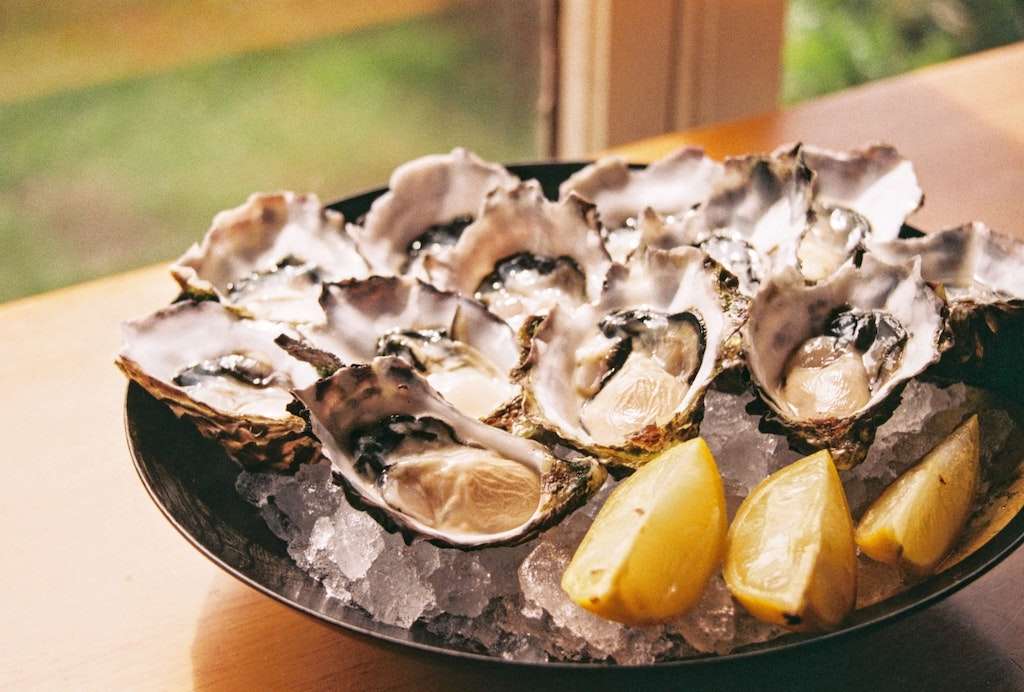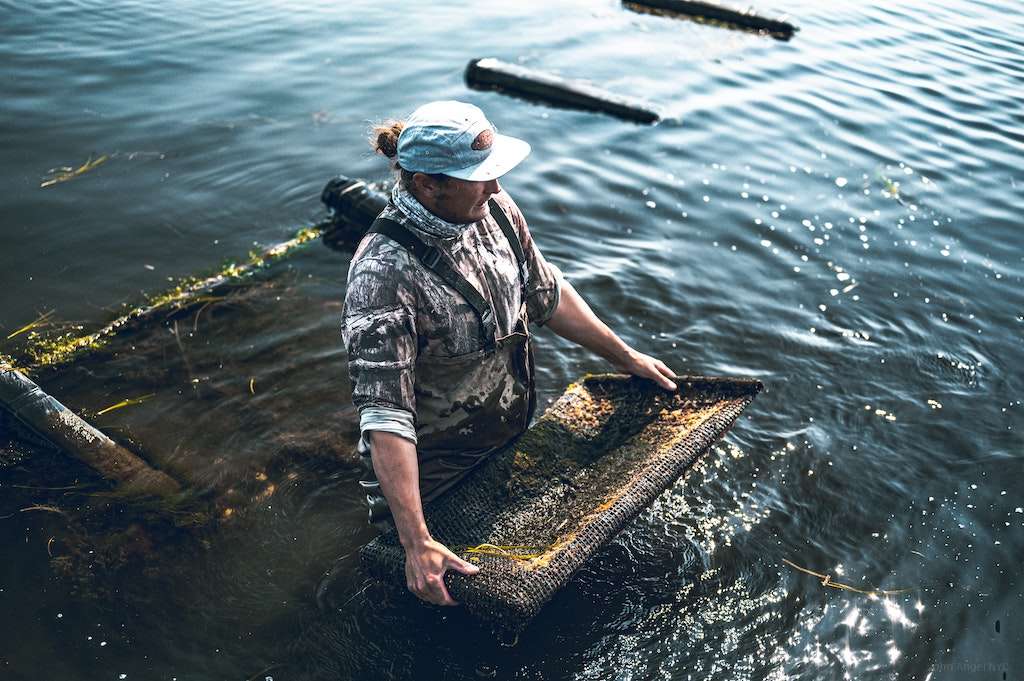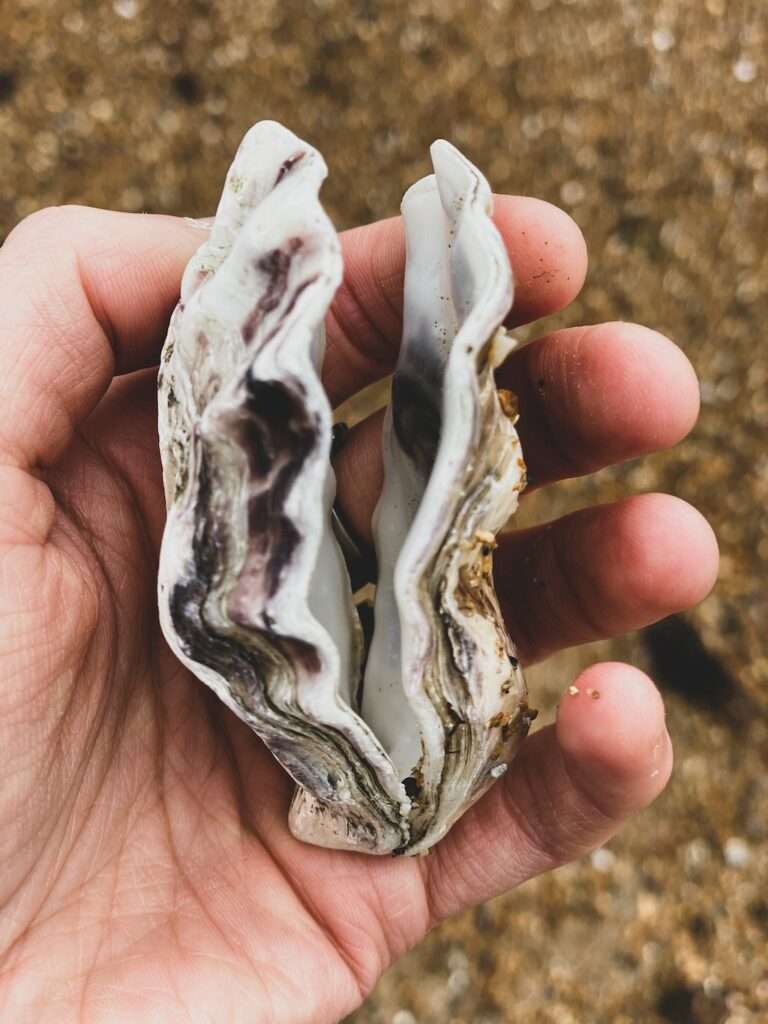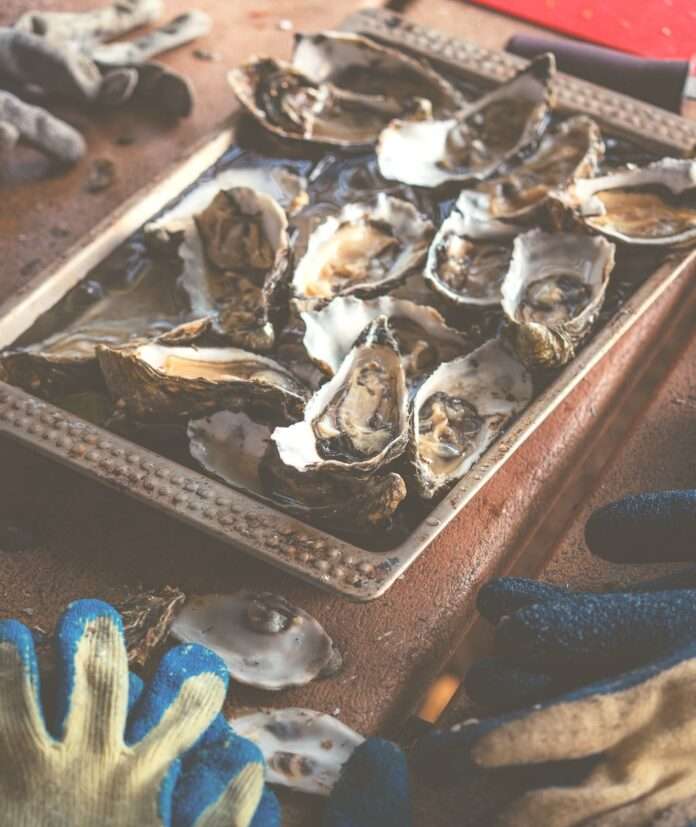Oysters have a multitude of environmental benefits, but farming them presents problems. Are plant-based oysters the answer?
Around 400,000 years ago, humans discovered fire, and, needless to say, it was a total game changer. It provided warmth, as well as protection from predators, but also a new way to prepare food. After this, our ancestors started cooking all manner of ingredients over an open flame, including shellfish, like oysters.
Oysters have appeared consistently throughout historical records. Evidence of their consumption was found in South African caves from more than 160,000 years ago, and records also show they were enjoyed by wealthy ancient Romans and Greeks. In the 18th century, an increase in production caused prices to drop, and they became working-class dietary staples. Today, in the U.S., you can pick up a tub for around $13. But despite their rich history, should we still be eating oysters?
When populations are left to thrive, oysters are climate heroes. Aquaculture, on the other hand, can have a negative environmental impact. Plus, the jury is still out on whether bivalves can feel pain, bringing ethics into question.
Oyster farming: is it sustainable?
In the wild, oyster reefs are incredibly beneficial to the environment. They are an example of blue carbon, which means they are an ocean-dwelling species that can sequester carbon dioxide. This is because they need carbon dioxide to be able to grow their shells. (Other examples of blue carbon include whales, seagrass, and mangroves.)
They also help to improve the health of the oceans in general by increasing water clarity and water quality, which helps other species to thrive. Plus, their reefs help to provide vital habitats for animals like shrimp, herrings, and crabs. But these reefs are under threat. Back in 2009, one report found that 85 percent of oyster reefs worldwide had disappeared, largely due to the world’s huge appetite for shellfish, which led to overharvesting.

But the global oyster market is still growing, and that’s due to an expanding aquaculture market. Oyster farming is often hailed for its sustainable credentials. Because, on farms, they still offer the ocean the same purifying benefits, and they can still sequester carbon. But there are some drawbacks.
Research also suggests that these farms can cause environmental damage. One 2016 study, published in the Journal of Fisheries & Livestock Production, noted that oyster cultivation can contribute to environmental disturbances, like the removal of water nutrients and a reduction in seagrass, as oysters “compete with other organisms for survival.”
Another concern is that aquaculture may increase the presence of invasive, disease-spreading organisms and species, as well as take habitat away from animals that rely on it, like seabirds. The study, which calls for appropriate and clear environmental management and planning, notes: “The species most likely to be affected by loss of habitat are birds whose feeding and breeding habitats are suitable for oysters farming and which feed or breed on the low shore to mid-shore. This may increase their energy requirements, and hence adversely affect survival.”
Can oysters feel pain?
Environmental issues aside, the farming of oysters is also associated with potential welfare implications. Right now, little is known about the sentience of bivalves, but some research suggests that their nervous systems do react to potential harm. This doesn’t necessarily mean they experience pain in the way that other animals do, but it does imply that they may have evolved to try and avoid the risk of damage.
Jeff Sebo, a professor of environmental studies at New York University, told Sentient Media, it makes sense not to eat them if we don’t have to.

He said: “We want to be encouraging people to frame animals as not to be eaten rather than get into the psychologically more complicated territory of labeling some animals as to be eaten, but other animals as not to be eaten.”
The solution? Alternative seafood and wild oyster restoration
For those who love the taste of oysters, but prefer to leave the oceans alone, there is a solution in the world of food science. North Carolina-based Pearlita Foods is the world’s first cell-cultured mollusk company. Right now, it is working on offering ethical and sustainable alternatives to oysters, and it’s getting really close to rolling them out to the masses.
In 2022, it held the first-ever tasting of its plant-based oysters in San Francisco. (Pearlita is also working on cultivated technology to create cell-based oysters, but right now, its main prototype is plant-based.) According to the brand, the response from tasters was positive, and it hopes to launch the product properly next year. It is also working on other shellfish alternatives, like vegan clam chowder.
Out in the oceans, however, wild oysters also need support. And that’s why a number of projects, like the U.K.’s Wild Oysters Project, are focused on the restoration of oyster reefs. So far, the project has helped to release one billion oyster larvae, which has resulted in the filtering of 22 million liters of water.

It has also released a “how-to” guide, to help other communities and NGOs support oyster restoration. Its efforts are specifically focused on Europe, where the European flat oyster is nearly extinct because of habitat destruction and overfishing. But the initiative isn’t alone.
In the U.S., The Nature Conservancy has been rebuilding oyster reefs in the Great Bay Estuary in New Hampshire. And in Scotland, one WWF project aims to restore four hectares of seagrass meadows and reintroduce 30,000 oysters in the Firth of Forth.
Speaking about the project in 2022, which is being financed by the ScottishPower Fund, Ricardo Zanre, WWF’s ocean restoration program manager told The Scotsman that the decline of seagrass and oysters was a “concerning loss in so many ways.”
“For the homes they provide for marine life, their value in absorbing carbon dioxide and improving water quality, and their importance as a heritage for coastal communities,” he added. “The Forth is an amazing example of a place where local communities working to restore coastal habitats can not only help to bring back these benefits but also to strengthen the connection between nature and community.”
Related on Ethos:


